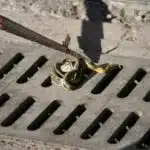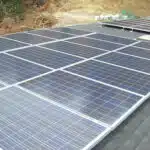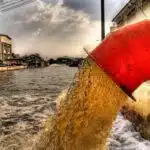Maintaining an above-ground pool requires some effort and knowledge, especially when it comes to draining the water. Draining the pool is necessary for various reasons, such as cleaning the pool floor and walls, repairing damages, or winterizing the pool. However, knowing how to drain an above-ground pool can be challenging for some pool owners who lack experience in this area.
In this article, we will discuss two different ways to drain an above-ground pool effectively. The first method involves using a submersible pump, which is a common tool used by many pool owners. The second method involves using a gravity drain system that is suitable for those who prefer not to use pumps or have limited access to electricity. By following these methods carefully, you can ensure a smooth and successful process of draining your above-ground pool without any complications or damage to your equipment.
Understanding The Importance Of Draining Your Above-Ground Pool
Maintaining your above-ground pool is essential to keeping it in good condition and preventing damage. Draining your pool is an important part of that maintenance routine, but many pool owners neglect this task or don’t realize how vital it is. Failing to drain your pool regularly can lead to issues such as algae growth, unbalanced chemicals, and structural damage.
One of the main reasons for draining your above-ground pool is to prevent damage caused by freezing temperatures. When water freezes, it expands, which can cause cracks in the walls and floor of your pool. This type of damage can be costly to repair and may even require a complete replacement of your pool. By draining your pool before the winter months, you’ll avoid these potential problems.
Another reason for draining your above-ground pool is to maintain proper chemical balance. Over time, the levels of chlorine and other chemicals in your pool can become imbalanced due to evaporation and contamination from swimmers. Draining and refilling your pool periodically will help keep the chemical levels within the recommended range, ensuring a safe swimming environment for you and your family.
To ensure that you’re properly maintaining your above-ground pool, it’s important to understand why draining it is so crucial. By preventing damage caused by freezing temperatures and maintaining proper chemical balance, you’ll be able to enjoy a clean and healthy swimming environment all season long. Now that we’ve covered why draining is important let’s move on to preparing your pool for drainage.
Preparing Your Pool For Drainage
As a pool maintenance expert, it is important to know how to properly prepare your above-ground pool for drainage. There are various water disposal methods available, but choosing the right one will depend on the size of your pool and how quickly you need the water removed.
Before draining your pool, you must first turn off all electrical components such as pumps and heaters. This will prevent any damage to these components and ensure that they remain safe during the process. Next, remove any debris from the pool, including leaves and dirt, as this can clog up your drainage system.
Once you have prepared your pool for drainage, there are two main ways to remove the water: using a sump pump or using a drain valve. A sump pump is best suited for larger pools and can be rented from most home improvement stores. On the other hand, a drain valve is more suitable for smaller pools and can be manually opened to release the water. Whichever method you choose, always ensure that you are following proper water disposal methods in accordance with local regulations or guidelines.
It is important to note that different regions may have varying regulations regarding proper pool maintenance and water disposal methods. Before beginning any draining process, it is essential to check for any local regulations or guidelines in order to avoid breaking any laws or causing harm to the environment. By taking these precautions and properly preparing your pool for drainage, you can ensure its longevity and maintain its overall cleanliness and safety.
Checking For Any Local Regulations Or Guidelines
According to recent studies, there are approximately 10.4 million residential swimming pools in the United States alone. With such a vast number of pools available, it is essential to be aware of any local regulations and restrictions that may affect your pool maintenance process.
Researching restrictions should be your first step before draining an above-ground pool. Different states and cities have varying guidelines on how to dispose of large amounts of water. Some areas might prohibit you from draining the pool onto public land or into sewage systems due to environmental concerns.
Safety precautions should also be taken when draining an above-ground pool. Always ensure that children and pets are kept away from the pool area during the process, as the water can pose a drowning risk. Additionally, you must use caution when handling electrical equipment around water sources, such as submersible pumps.
With safety being a top priority, researching restrictions and taking necessary precautions is vital before starting any maintenance work on your above-ground pool. In the following section, we will detail method 1: using a submersible pump to drain your pool while ensuring all necessary safety measures are met.
Method 1: Using A Submersible Pump
When it comes to draining an above-ground pool, using a submersible pump is one of the most effective methods. However, selecting the right pump is crucial to ensure that the process goes smoothly and without any hiccups. It is recommended to choose a pump that has a flow rate of at least 2,000 gallons per hour and a discharge hose that is long enough to reach your desired drainage location.
Once you have selected the appropriate pump, it is essential to take care of its maintenance regularly. Before using the pump, make sure that it’s free from any debris or damage. Also, keep an eye on the water level while pumping as running the pump dry can cause severe damage. After use, clean and dry the pump thoroughly before storing it away for future use.
In summary, choosing the right submersible pump and ensuring its proper maintenance are key factors in successfully draining an above-ground pool. By taking good care of your equipment, you can avoid any unforeseen issues during the draining process. In the next section, we will discuss gathering all necessary tools and equipment for this task.
Gathering The Necessary Tools And Equipment
To begin the process of draining an above-ground pool, you’ll need to gather the necessary tools and equipment. Picture yourself as a skilled pool maintenance expert who is about to embark on a mission to rescue a distressed swimming pool. You’ll need to arm yourself with the right tools and knowledge in order to complete your task efficiently.
Here are three essential items you’ll need before starting the draining process:
- A submersible pump: This device will be used to remove water from the pool quickly and effectively.
- A garden hose: You’ll need this item to connect the pump to an appropriate drainage area or sewer line.
- Safety goggles: Protecting your eyes from any debris or chemicals in the water is important for your safety.
As you gather your tools, it’s also important to keep water conservation in mind. While it may be tempting to simply let all of the water drain out into a nearby storm drain, this can harm local ecosystems and waste precious resources. Consider using the drained water for other purposes, such as watering plants or washing cars.
With these items in hand, you’re ready to move on to setting up the submersible pump and beginning the draining process without causing harm to our environment.
Setting Up The Submersible Pump
Choosing the right pump for draining an above-ground pool is important in order to ensure efficient draining and prevent damage to the pool or pump. The pump should be selected based on the size of the pool and the type of pool. It is important to consider the suction power, capacity, and the material that the pump is made of. Once the right pump is selected, it is time to assemble it. The pump should be put together according to the instructions provided with the pump. After assembly, the pump needs to be connected to the pool and hoses, making sure the hose length is adequate to reach the designated draining area. It is important to ensure a tight connection between the hose and the pool to prevent leakage.
Choose The Right Pump
Choosing the right pump is crucial when it comes to draining an above-ground pool. The type of pump you select will determine how efficiently and quickly you can complete the task. When choosing a pump, consider its flow rate and horsepower. Look for pumps with higher horsepower since they have more power to move water. Also, ensure that the pump has a flow rate that matches your pool size.
Maintenance tips are equally important when it comes to selecting a submersible pump. Proper maintenance ensures that your pump remains in good working condition, which helps you avoid costly repairs or replacements. After each use, clean the pump thoroughly by removing any debris or excess water from its surfaces. Additionally, check regularly for any signs of wear and tear such as cracks on the hosepipes or damaged seals.
In conclusion, choosing the right submersible pump is key to successfully draining an above-ground pool. By selecting a high-quality pump with a high flow rate and horsepower, you can efficiently remove all the water from your pool in no time at all. Remember also to maintain your pump properly by regularly cleaning it and checking for any signs of damage so that it lasts longer and works more effectively over time.
Assemble The Pump
Now that you have the right submersible pump for draining your above-ground pool, it’s time to set it up properly. Assembling the pump is crucial to ensure that it functions optimally and avoids any potential issues down the line. A poorly assembled pump can lead to leaks, reduced efficiency, and even damage to the pump itself.
Before assembling the pump, make sure to read through the instructions carefully. Each model may have unique directions for assembly, so it’s important not to skip any steps or assume that you know how it works. Once you’ve familiarized yourself with the instructions, begin by attaching any necessary hoses or connectors securely. Make sure that everything fits snugly and that there are no gaps or leaks.
After assembling the pump, take some time to perform basic maintenance tasks such as cleaning and lubricating various parts. This will help keep your pump in good condition and prevent unnecessary wear and tear. Additionally, troubleshoot any issues before using it on your pool. Check for loose connections or damaged parts and replace them immediately if necessary. By taking these steps, you can ensure that your submersible pump is working at its best when you need it most!
Connect Hoses
Once you have carefully read the instructions for assembling your submersible pump, the next step is to connect hoses. This task is crucial as it ensures that water flows smoothly through the pump and prevents any leakage that could lead to damage or inefficiency. Before connecting hoses, be sure to take safety precautions such as unplugging the pump from its power source.
When connecting hoses, ensure that they fit snugly onto the pump’s inlet and outlet ports. Make sure there are no gaps or loose connections that could result in leaks or reduced flow of water. You should also consider the environmental impact of using a submersible pump. By ensuring proper hose connections, you can maximize efficiency and minimize energy consumption during use.
To further prevent any potential issues, inspect your hoses regularly for wear and tear or damage caused by exposure to harsh elements such as sunlight or chemicals. Replace damaged hoses immediately to avoid leaks and environmental contamination. By taking these steps in connecting hoses, you can ensure a safe and efficient operation of your submersible pump when draining your above-ground pool.
Starting The Pump And Monitoring Progress
To start draining an above-ground pool, the first step is to start the pump. Turn off all electrical power to the pool, then remove the drain plug and open the skimmer valve. Once you have done this, turn on the pump and allow it to run for a few minutes before checking the starting pump pressure. The starting pump pressure should be between 10 and 15 psi.
Once you have started the pump, you will need to monitor its progress to ensure that it is working correctly. If you notice any issues with the flow of water or pressure levels, it may be necessary to troubleshoot common problems. One common problem is air in the system, which can cause low flow or low pressure. To fix this issue, check all fittings and connections for leaks and tighten them as needed.
In addition to monitoring progress and troubleshooting issues, it is important to be aware of any potential safety concerns when draining an above-ground pool. Always wear appropriate protective equipment when working with chemicals or equipment, and keep children and pets away from the area during drainage. By following these steps and addressing any issues or concerns that arise along the way, you can safely and effectively drain your above-ground pool as needed.
Addressing Any Issues Or Concerns
Ensuring the safety of individuals and the environment is crucial when draining an above-ground pool. To avoid accidents, it is important to turn off all electrical equipment connected to the pool before draining begins. Additionally, a safe location for draining should be chosen, taking into account the slope of the ground to avoid water damage to surrounding properties.
Another concern when draining a pool is the potential environmental impact. The chemicals used in pool maintenance can be harmful to plants and animals if not disposed of properly. Therefore, it is recommended to consult with local authorities regarding proper disposal methods or consider hiring a professional service that specializes in eco-friendly pool maintenance.
Taking these safety precautions and environmental considerations into account will help ensure a successful and responsible drain of your above-ground pool. Next, we will discuss method 2: using a gravity drain system.
Method 2: Using A Gravity Drain System
Gravity drain maintenance is a simple process that can be performed by anyone with basic knowledge of pool maintenance. This method involves using a gravity drain system to remove water from the above-ground pool. The first step in this process is to locate the drainage valve on the pool and ensure that it is not clogged with debris.
Once the drainage valve is cleared, the next step is to connect a garden hose to the valve and direct it away from the pool area. It is important to ensure that the end of the hose is at least 25 feet away from any structures or landscaping to prevent water damage. Once connected, open the drainage valve and allow all of the water in the pool to flow out through the hose.
Preventing water damage during gravity drain maintenance is essential. If not done properly, excess water can cause significant damage to nearby structures and landscaping. It is crucial to take extra precautions when performing this task, such as monitoring weather conditions and ensuring that there are no potential hazards nearby.
Understanding how the gravity drain system works is important for maintaining an above-ground pool properly. By following these simple steps, you can easily perform routine maintenance tasks such as draining your pool without causing any damage in your surroundings. Always take safety precautions seriously and regularly check for any clogs or damages before starting any maintenance work on your above-ground pool.
Understanding How The Gravity Drain System Works
The gravity drain system is a simple and effective way to drain above-ground pools. It works by allowing water to flow out of the pool through a hose or pipe that is connected to the bottom of the pool. The water then flows downhill, using gravity, until it reaches a designated area where it can safely disperse.
To use the gravity drain system, you need to first locate the drainage port on your pool. This is usually located at the lowest point of your pool’s wall. Next, connect a hose or pipe to this port and run it to your desired drainage location. Once everything is set up, you can start draining your pool by opening the drainage valve.
Gravity drain system maintenance is relatively simple but necessary if you want it to work effectively every time you need it. One common issue with this type of system is clogging due to debris build-up in the hose or pipe. To prevent this from happening, ensure that your pool’s water is clean and free of debris before starting to drain it. You should also inspect and clean your hose or pipe regularly for any signs of blockages or damage.
Tips for maintaining your gravity drain system:
- Regularly check for leaks in your hoses and pipes.
- Keep an eye out for any signs of clogging in the drainage port.
- Never leave your pool unattended while draining as this can cause flooding.
- Always follow manufacturer instructions when setting up and using your gravity drain system.
Now that you understand how the gravity drain system works and how to maintain it properly let’s move on to gathering the necessary tools and equipment needed for draining an above-ground pool using another method – siphoning excess water out manually using a garden hose.
Gathering The Necessary Tools And Equipment
Gathering the tools and equipment necessary for draining an above-ground pool requires a garden hose, an appropriate pool cover, a pump, a vacuum, a skimmer, a filter, and pool chemicals. Additionally, it is recommended to have a test-kit, water-level gauge, buckets, ladders, gloves, safety glasses, a pool brush, and a scrub brush on hand. The garden hose can be used to move the water away from the pool, while the pool cover will keep debris from entering while the pool is drained. The pump and vacuum can be used to speed up the draining process. The skimmer, filter, and pool chemicals will be necessary for the pool’s chemical balance. The test-kit and water-level gauge will be used to monitor the pool’s water level and chemical balance. The buckets, ladders, gloves, safety glasses, pool brush, and scrub brush will be necessary for cleaning the pool before and after it is drained.
Garden Hose
To properly drain an above-ground pool, one must gather the necessary tools and equipment. One of the most commonly used methods for draining an above-ground pool is by using a garden hose. This method is simple and easy to execute, making it ideal for pool owners who prefer a more cost-effective solution.
Using a garden hose requires minimal effort and can be done quickly. To accomplish this task, position one end of the garden hose inside the pool and place the other end somewhere lower than the pool’s water level. Once you have secured both ends, turn on the faucet to start siphoning out the water from your pool. However, this method may not be suitable if you need to drain large amounts of water as it can take a considerable amount of time.
If you need to drain large amounts of water from your above-ground pool quickly, consider renting equipment or using a sump pump instead. Sump pumps are efficient tools in removing large volumes of water with ease. Renting equipment is also an option but may require additional costs. Regardless of which method you choose, always make sure that safety measures are in place before starting any process to avoid accidents or injuries.
Pool Cover
As a pool maintenance expert, it is essential to gather all the necessary tools and equipment before starting any pool maintenance work. One of the crucial items that should be included in your toolkit is a pool cover. A pool cover serves as an essential protective layer that keeps debris out of your pool while also reducing evaporation. If you don’t have a pool cover, there are several alternatives you can use to achieve similar results.
One option is using a solar blanket, which traps heat from the sun and reduces water evaporation. Another alternative is using a mesh safety cover that prevents debris from entering the pool while also providing additional safety benefits. Regardless of which type of covering you choose, it is important to maintain it regularly to ensure its effectiveness. Proper maintenance includes cleaning the cover and ensuring it fits snugly over your pool.
In conclusion, having a good quality pool cover can help extend the life of your above-ground pool while also reducing maintenance costs. However, if you don’t have one, there are several alternatives available that can provide similar benefits. Whatever type of covering you choose, remember to maintain it regularly so that it remains effective in protecting your pool.
Pump
As a pool maintenance expert, it is important to gather all the necessary tools and equipment before starting any pool maintenance work. One of the most important items in your toolkit is a pump. The purpose of the pump is to circulate the water in your pool, keeping it clean and free of debris. However, like all equipment, pumps require regular maintenance to ensure their effectiveness.
Pump maintenance includes cleaning the strainer basket and skimmer basket regularly, checking the filter pressure, and ensuring that the pump motor is working correctly. Neglecting these tasks can lead to poor circulation and potentially damage your pump. Additionally, when choosing a pump, it’s essential to select one that’s appropriate for your pool size and usage demands.
Choosing the right pump can save you money in energy costs while also prolonging its lifespan. A professional pool technician can assist you in selecting a suitable pump based on your specific needs. In conclusion, having a well-maintained pump is crucial for keeping your pool clean and healthy. By incorporating regular maintenance into your routine and selecting a suitable pump for your pool size and usage demands, you’ll be able to maintain optimal performance while extending its lifespan.
Setting Up The Gravity Drain System
Setting up the Gravity Drain System:
Ah, the gravity drain system. It’s a classic choice for pool owners who want to be eco-friendly and save some money. Just think of it as letting nature do its job, but in reverse. Instead of water naturally flowing into your pool, you’re allowing it to flow out. Genius!
But before you go running outside with a hose and start siphoning water out of your pool like a thirsty camel, let’s discuss some pros and cons. One advantage is that this method requires no electricity, so you won’t see an increase in your energy bill. Another benefit is that you don’t need any fancy equipment; all you need is a garden hose and some duct tape. However, the downside is that it can take days or even weeks to fully drain your pool, which can be frustrating if you have plans to use your backyard for other activities. Additionally, if not done properly, it can lead to serious flooding issues in your yard or neighboring properties.
Now that we’ve weighed the pros and cons, let’s dive into some maintenance tips. First off, make sure that your garden hose is long enough to reach from your pool area to where you want the water to drain (preferably somewhere downhill). Next, secure the hose tightly with duct tape or a clamp so that it doesn’t come loose during the draining process. Finally, monitor the progress regularly by checking on the water level in your pool every few hours. If anything looks off or unexpected (like sudden flooding), stop the process immediately and address any issues before continuing.
In order to ensure a successful draining experience with minimal issues and maximum efficiency using the gravity drain system – setting up proper drainage points are crucial steps towards achieving this goal. In monitoring progress and addressing any issues section next- we will cover how frequently one should check-in on their gravity drain system progress over time along with steps needed when troubleshooting any problems that may arise.
Monitoring Progress And Addressing Any Issues
To effectively monitor your pool’s draining progress, it is essential to keep a close eye on the water level. This can be done by checking the pool frequently and marking the water level with a permanent marker or tape. It is important to keep in mind that the rate of drainage will depend on various factors such as the size of your pool, the depth of the water, and the type of drainage method used.
If any issues arise during the draining process, best practices involve troubleshooting techniques to address them promptly. One common issue is clogging, which can occur when debris gets stuck in the drainage pipe. To resolve this, try using a plunger or drain snake to clear out any blockages. Another issue could be leaks in the pool shell or equipment, which should be inspected by a professional before proceeding with further draining.
Once your pool has been fully drained, it’s time to clean and store your equipment properly. This involves removing any remaining water from hoses and filters and storing them in a dry place until they are ready for use again. Additionally, take this opportunity to inspect all equipment for signs of wear or damage and make any necessary repairs or replacements. By following these steps, you will ensure that your pool is properly maintained for long-lasting enjoyment.
Cleaning And Storing Your Equipment
- Pool maintenance requires following safety procedures at all times to protect swimmers and bystanders.
- To properly drain an above-ground pool, it is necessary to first disassemble any accessories and remove the pool cover.
- All pool surfaces should be thoroughly cleaned before storage and the water should be completely drained from the pool.
- It is important to store all pieces of equipment such as covers, chemicals, brushes, vacuums, filters, pumps, hoses, accessories, poles, skimmers, and hooks in a safe place.
- Covers are essential for keeping debris out of the pool during the winter and should be used when not in use.
- Careful attention should be taken to ensure all chemicals are stored correctly and away from children and pets.
Safety
Picture this: you’re standing beside your above-ground pool, ready to drain it for cleaning and maintenance. As a pool maintenance expert, I cannot stress enough the importance of safety when handling any pool-related task. Before draining your pool, make sure that all electrical equipment is turned off and unplugged to prevent electrocution. Ensure that children and pets are kept away from the area while you work.
Pool safety tips should always be top of mind when performing proper maintenance techniques. Do not attempt to drain your pool on your own if you are not confident in doing so safely. If the pool has a large capacity, consider hiring a professional to assist with draining and cleaning. Always wear protective gear such as gloves and goggles to avoid getting injured by sharp edges or chemicals used in cleaning.
In summary, proper maintenance techniques require careful consideration of safety measures to protect both yourself and others during the process. Take the time to educate yourself on pool safety tips before attempting any tasks related to swimming pools. Remember that prevention is key in avoiding accidents or injuries caused by negligence or lack of precautionary measures.
Disassembly
When it comes to proper maintenance techniques for your pool, cleaning and storing your equipment is just as important as draining and cleaning the pool itself. After a long summer of use, it’s crucial to ensure that all equipment is cleaned thoroughly and stored properly to avoid damage or deterioration during the off-season. As a pool maintenance expert, I recommend starting with the pool cover.
Removing the pool cover can be a daunting task if not approached properly. Before disassembling any parts, be sure to clean any debris from the top of the cover and remove any water that may have accumulated over time. Once removed, carefully fold and store the cover in a dry, cool place away from sunlight or extreme temperatures. It’s also important to inspect the cover for any damages or tears that may need repairing before next season. Additionally, winterization tips such as adding antifreeze to your plumbing lines can help prevent costly repairs due to frozen pipes.
Next, disassemble all other equipment such as pumps, filters, and heaters for thorough cleaning and storage. Be sure to read manufacturer instructions before attempting disassembly to avoid damaging any components. Clean each piece according to their specific needs using appropriate cleaning solutions and tools. Once cleaned, store each piece in a clean area free from moisture or extreme temperatures.
In conclusion, proper cleaning and storage of your equipment is essential for maintaining its longevity and functionality for future use. By paying attention to details such as removing the pool cover correctly and following winterization tips, you can save yourself time and money in future repairs or replacement costs. Remember to always follow manufacturer instructions when disassembling equipment for cleaning and storage purposes.
Cleaning
As a pool maintenance expert, it’s crucial to emphasize the importance of cleaning your equipment before storing it for the off-season. Neglecting this step can lead to corrosion, buildup of microbial organisms, and ultimately equipment failure. Regular cleaning not only helps prolong the lifespan of your pool equipment but also ensures its optimal performance when you’re ready to use it again.
When it comes to cleaning your pool equipment, it’s essential to follow manufacturer instructions closely. Each piece of equipment has specific care requirements that should be followed meticulously. For example, filters should be rinsed and soaked in a cleaning solution before being reassembled. Pumps should have their impellers inspected and cleaned as well. It’s also important to regularly check the water chemistry for proper water treatment and balance.
Lastly, after cleaning your pool equipment, storage is equally important to maintain its functionality for future use. Store each piece in a cool dry place free from moisture or extreme temperatures. Additionally, consider investing in pool covers specifically designed for each piece of equipment such as pump covers or filter covers. These covers help protect against damage and deterioration during storage while keeping them clean and ready for next season.
By adhering to these steps for cleaning and storing your pool equipment properly, you can avoid costly repairs or replacement costs down the line while ensuring optimal performance when you’re ready to use your pool again. Remember that regular maintenance is key to enjoying your backyard oasis to its fullest potential year after year!
Conclusion: Successfully Draining Your Above-Ground Pool
As a pool maintenance expert, it is crucial to emphasize the importance of proper maintenance of your above-ground pool. This includes regular cleaning and draining of your pool, especially before the winter season. Failing to do so can lead to significant damage to your pool and its equipment, resulting in costly repairs.
When it comes to draining your above-ground pool, there are two different ways you can go about it. The first method involves using a pump and hose to drain the water out of the pool and into a nearby drainage area or sewer system. It is important to ensure that the hose is securely attached to both the pump and the drainage area, as any leaks can cause water damage or create a safety hazard.
The second method involves using gravity to drain the water out of your pool by removing the cap from the bottom of the pool’s filter system. This method is simpler but may take longer than using a pump depending on how much water needs to be drained. Whatever method you choose, make sure you follow all safety precautions during drainage, such as wearing appropriate protective gear and keeping children and pets away from the draining area.
Maintenance is key in ensuring that your above-ground pool remains in good condition for years to come. By following proper guidelines for cleaning and draining your pool, you can avoid costly repairs or even replacement in the future. Remember always to prioritize safety when performing any maintenance tasks on your pool.
Conclusion
Draining an above-ground pool is an essential task that every pool owner must know how to do. Understanding the importance of proper drainage and preparing your pool for it are crucial in ensuring that your pool remains in good condition. Before starting the process, check for any local regulations or guidelines that may apply in your area.
There are two methods of draining an above-ground pool: using a submersible pump or setting up a gravity drain system. Both methods require gathering the necessary tools and equipment, monitoring progress, and addressing any issues that may arise during the process. It is also important to clean and store your equipment properly after use.
Successfully draining your above-ground pool requires careful planning and execution. As a pool maintenance expert, I recommend taking the time to understand the steps involved and following them closely to avoid any potential damage to your pool. By doing so, you can ensure that your pool remains in excellent condition for years to come.
Image Credits
- “Above Ground Pool” by bennylin0724 (featured)

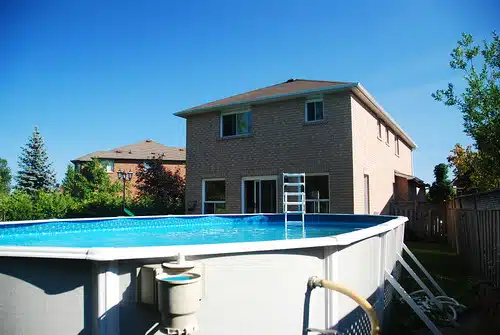
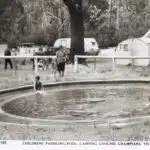
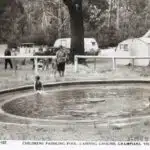

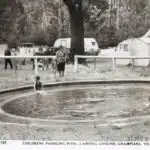



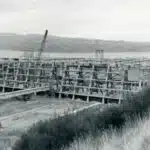
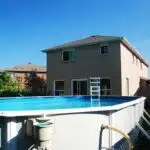
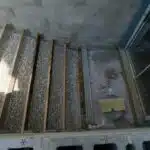

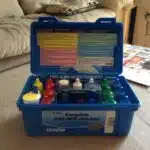
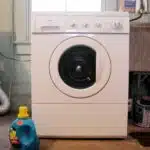


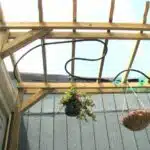
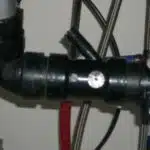

![How To Get Hair Out Of A Bathtub Drain 20 2/365 [Bathtub Drain]](https://green-life.blog/wp-content/uploads/2023/05/cOEu5edpkejq-150x150.jpg.webp)

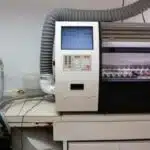
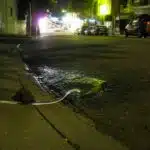
![How To Replace A Bathtub Drain In A Mobile Home 24 2/365 [Bathtub Drain]](https://green-life.blog/wp-content/uploads/2023/05/3ft8KAJsNnjq-150x150.jpg.webp)
